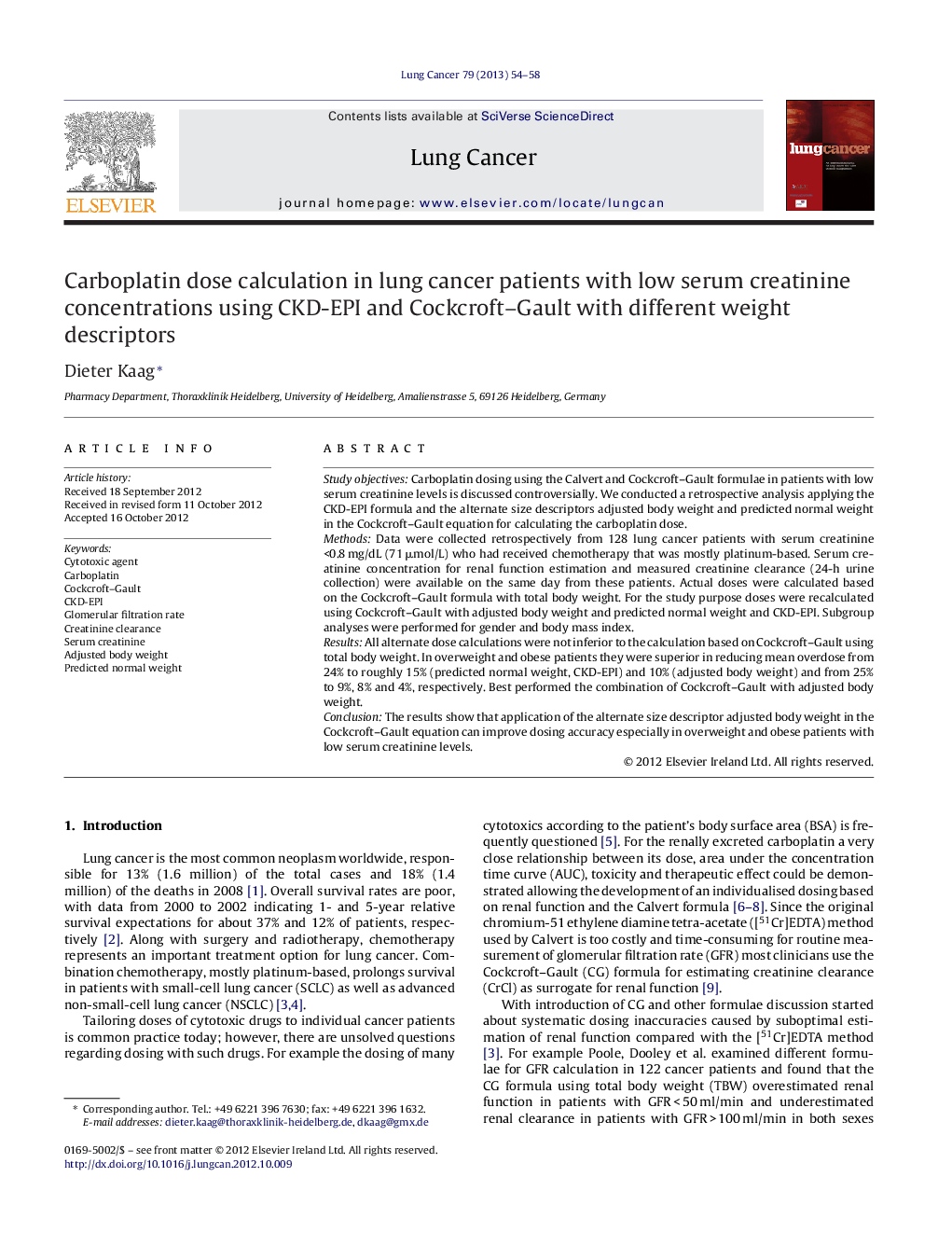| Article ID | Journal | Published Year | Pages | File Type |
|---|---|---|---|---|
| 2141651 | Lung Cancer | 2013 | 5 Pages |
Study objectivesCarboplatin dosing using the Calvert and Cockcroft–Gault formulae in patients with low serum creatinine levels is discussed controversially. We conducted a retrospective analysis applying the CKD-EPI formula and the alternate size descriptors adjusted body weight and predicted normal weight in the Cockcroft–Gault equation for calculating the carboplatin dose.MethodsData were collected retrospectively from 128 lung cancer patients with serum creatinine <0.8 mg/dL (71 μmol/L) who had received chemotherapy that was mostly platinum-based. Serum creatinine concentration for renal function estimation and measured creatinine clearance (24-h urine collection) were available on the same day from these patients. Actual doses were calculated based on the Cockcroft–Gault formula with total body weight. For the study purpose doses were recalculated using Cockcroft–Gault with adjusted body weight and predicted normal weight and CKD-EPI. Subgroup analyses were performed for gender and body mass index.ResultsAll alternate dose calculations were not inferior to the calculation based on Cockcroft–Gault using total body weight. In overweight and obese patients they were superior in reducing mean overdose from 24% to roughly 15% (predicted normal weight, CKD-EPI) and 10% (adjusted body weight) and from 25% to 9%, 8% and 4%, respectively. Best performed the combination of Cockcroft–Gault with adjusted body weight.ConclusionThe results show that application of the alternate size descriptor adjusted body weight in the Cockcroft–Gault equation can improve dosing accuracy especially in overweight and obese patients with low serum creatinine levels.
